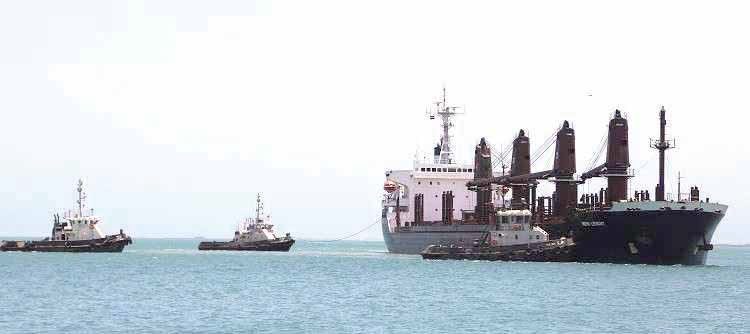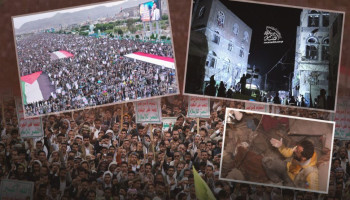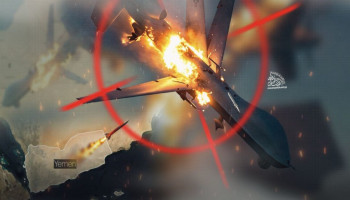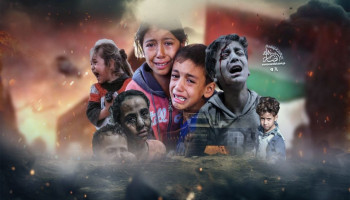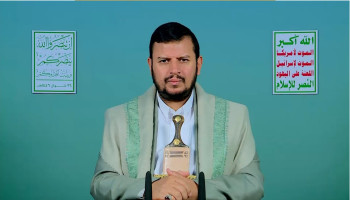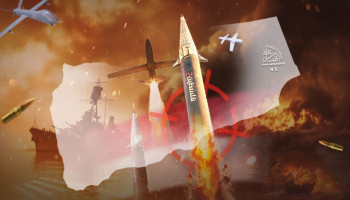In the beginning, Tariq Al-Shami, the official spokesperson for the General People's Congress, says: A year has passed since the unannounced truce and the de-escalation, which is still ongoing since April 2022, the date of the truce signing. The Yemeni people have not experienced any significant improvements, and the aggression alliance has not committed to the agreed-upon terms. It's true that there has been a slight improvement in the availability of petroleum derivatives, but the situation is still tough concerning salaries, the blockade on Al Hudaydah port, and opening Sana'a airport to the world without restrictions.
The aggression alliance relies on evasion tactics and maintaining a state of war and non-peace. The people have not seen the results of the truce or the de-escalation after a year, salaries have not been paid, and the airport has not been opened to the world without restrictions. The inspection and entry of various types of ships into Al Hudaydah port have not stopped, and the aggression alliance countries still exercise control.
The Yemeni people are united in their desire for real peace, as well as improvements in various humanitarian aspects such as paying salaries, opening the airport and port without restrictions. If war returns, they will fight to achieve this by force.
In my opinion, the Yemeni people have enough pressure options on the Supreme Political Council to take measures to lift the blockade and end the suffering imposed on them.
Buying Time
Dr. Farhan Hashem, a member of the Executive Authority of the parties opposing the aggression on Yemen, says: Since the first day of the truce, the aggression forces have adopted a carrot and stick policy in dealing with the truce, peace, and the rights of the Yemeni people. They partially open Al Hudaydah port but create obstacles in the air route, close the salary file completely, and hinder it entirely.
The leadership in Sana'a has made many concessions and has dealt with negotiations over the past year with great political shrewdness to stop the aggression and lift the siege. However, the other side, under pressure from the United States of America, does not want any breakthrough in this path. The evidence is the occasional obstruction, resulting in minimal relief that does not match the urgent humanitarian needs or the agreed-upon terms.
Evasive Maneuvers
Dr. Ambassador Ahmed Al-Amad, Dean of the Diplomatic Institute, says: "A full year without escalation is not a real truce or a ceasefire. There were unwritten understandings with the real aggressor, primarily Saudi Arabia, regarding some responses to humanitarian needs concerning Sana'a airport, Hodeidah port, and salaries. Despite the promises made during their visits to Yemen and communications through the Omani mediator, the main theme of the ongoing situation is evasion, procrastination, and focusing on details before the primary solution.
One thing that characterizes the Sana'a government, which has been proven over the past year, is that it does not thirst for blood or war. It endures and endures and endures this suffering. But signals have reached these countries from Mr. Abdulmalik Badreddin al-Houthi and the political leadership that this situation cannot and should not continue, as people are starving due to the blockade.
Imagine a flight departing from Sana'a with only a third of its passengers due to the arbitrary administrative measures imposed by the Saudi-backed Yemeni leadership and the mercenaries, as well as the complicating procedures.
The positives of the ceasefire include a decrease in the level of bloodshed, even if it has not stopped completely due to the attacks of the mercenaries and the Saudi army bombing the borders. Another aspect reveals the extent of confusion and the other party's subservience and mercenary behavior to the aggressor countries, harming their own country's interests. Today, we are talking about a full year of negotiations in the complete absence of the mercenaries who boasted for years that the coalition would restore them to power.
The negotiations also carried a Saudi admission, which the Saudi regime had long evaded, that it is a party to the aggression and not a mediator in the war. We do not hide the fact that direct communications are currently taking place between officials in Sana'a and Riyadh regarding the war and peace.
It seems that the aggressor party wants to remain in a gray area between no war and no peace, betting on the blockade and economic pressure to achieve what it failed to achieve by fire. Sana'a will certainly not accept that, but it is presenting its case after having made every effort to achieve peace and remove obstacles for the Saudi regime to climb down from the tree of aggression.
It is a grave mistake for the Saudi regime to continue reading Sana'a's position as weakness. The Saudis have not read the Yemeni scene correctly; otherwise, they would have realized that peace today is better for them than peace tomorrow, and peace yesterday would have been much better for them than peace today. They are undoubtedly betting on the economic blockade, but they ignore the growing public awareness of the party causing their suffering, and their focus and pressure have shifted towards their enemy, who has bombarded and blockaded them and cut their livelihoods.
The aggression is primarily Western-American, executed through regional tools. Today, the Americans are asking the Saudis about the price they must pay to Washington for it to accept peace in Yemen. The Americans see that their prestige has been damaged, and this is what they fear most. If we look at the Russian newspapers today, they mock American support for Ukraine with pictures of Yemeni fighters atop Abrams tanks and various types of American weapons. Thus, Washington is evasive in the file of foreign forces leaving Yemen.
Saudi Arabia aspires to a peace that achieves some military, political, and social influence for them. Therefore, we witness the formation of new militias despite their talk of peace. They want these militias to ensure their influence in Yemen post-war and, at the same time, be an instrument that, if war returns, will be seen fighting on various fronts for Saudi Arabia's interests.

